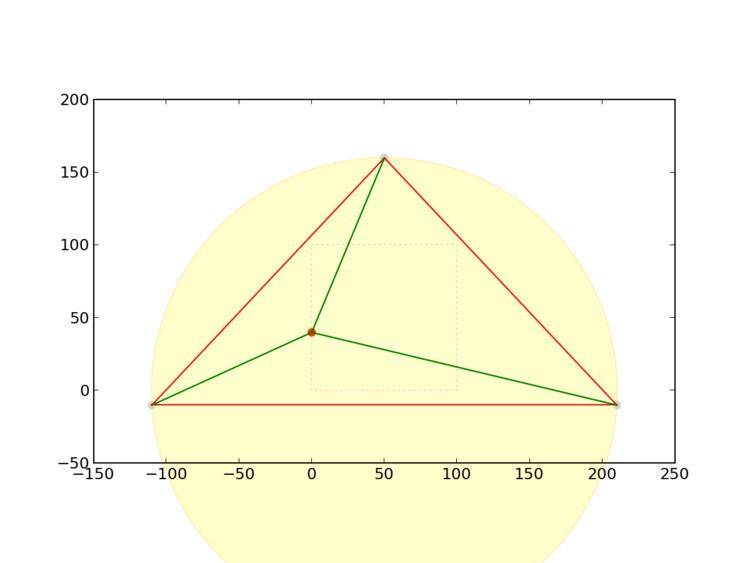 | ||
In computational geometry, the Bowyer–Watson algorithm is a method for computing the Delaunay triangulation of a finite set of points in any number of dimensions. The algorithm can be also used to obtain a Voronoi diagram of the points, which is the dual graph of the Delaunay triangulation.
The Bowyer–Watson algorithm is an incremental algorithm. It works by adding points, one at a time, to a valid Delaunay triangulation of a subset of the desired points. After every insertion, any triangles whose circumcircles contain the new point are deleted, leaving a star-shaped polygonal hole which is then re-triangulated using the new point. By using the connectivity of the triangulation to efficiently locate triangles to remove, the algorithm can take O(N log N) operations to triangulate N points, although special degenerate cases exist where this goes up to O(N2).
The algorithm is sometimes known just as the Bowyer Algorithm or the Watson Algorithm. Adrian Bowyer and David Watson devised it independently of each other at the same time, and each published a paper on it in the same issue of The Computer Journal (see below).
Pseudocode
The following pseudocode describes a basic implementation of the Bowyer-Watson algorithm. Efficiency can be improved in a number of ways. For example, the triangle connectivity can be used to locate the triangles which contain the new point in their circumcircle, without having to check all of the triangles. Pre-computing the circumcircles can save time at the expense of additional memory usage. And if the points are uniformly distributed, sorting them along a space filling Hilbert curve prior to insertion can also speed point location.
